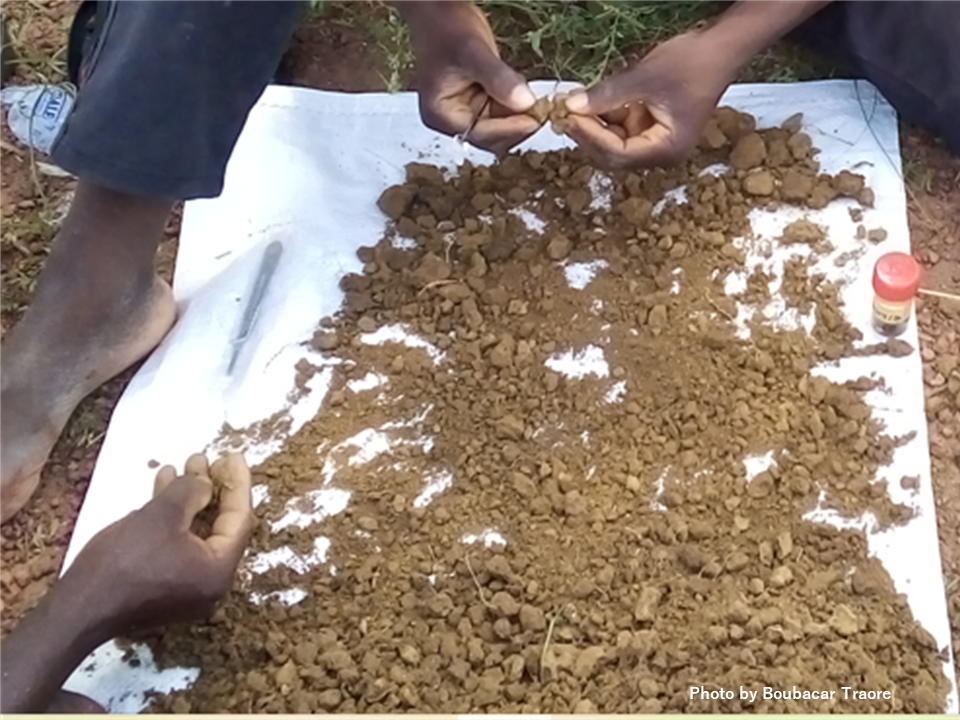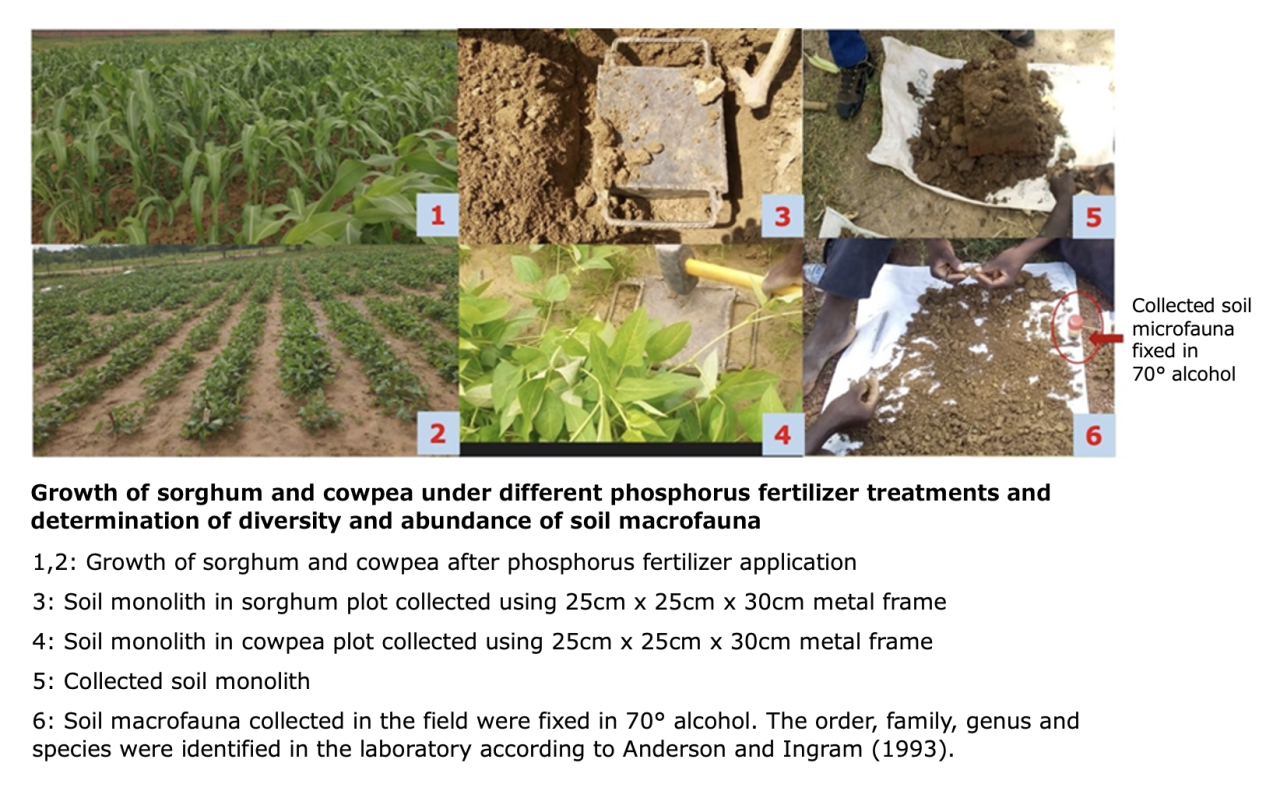Pick Up
795. Soil Fauna in Cultivated Lands can be Managed More Appropriately with Fertilizers from Phosphate Rock by Combining Organic Matter Application and Cereal-legume Association

795. Soil Fauna in Cultivated Lands can be Managed More Appropriately with Fertilizers from Phosphate Rock by Combining Organic Matter Application and Cereal-legume Association
Soil phosphorus deficiency is one of the main constraints for productive soils in sub-Saharan Africa, including Burkina Faso. Optimal soil fertilization during each growing season is required to increase crop yields and sustain livelihoods in this region. However, because mineral fertilizers are expensive for smallholder farmers and fertilizer prices continue to rise, JIRCAS, in collaboration with the Institute of Environment and Agricultural Research (INERA) of Burkina Faso, under the Science and Technology Research Partnership for Sustainable Development (SATREPS) Program, investigated different approaches to improve the agronomic use of Burkina phosphate rock. Calcination of the rock phosphate by heating at 900 ◦C for 10 min using a muffle furnace is one of the proposed technologies (Nakamura et al., 2015). The resulting calcined phosphate showed higher phosphate solubility and may have a better fertilizer potential than the direct application of Burkina phosphate rock in the semi-arid agroecological systems of Burkina Faso.
However, it is important to evaluate how this fertilizer, in combination with organic matter or other sources of phosphorus, affects soil health. Interest in soil health has increased in recent years as it is increasingly recognized that soils must be physically, chemically and biologically healthy to sustain crop production. An important aspect of soil biological health is the presence of diverse macrofauna (animals larger than 2 mm in width; worms, millipedes, termites, spiders, etc.) that influence soil structure and nutrient recycling, and regulate soil water, aeration, and drainage.
The study demonstrated that field application of phosphate rock or calcined phosphate rock did not increase or harm the abundance and diversity of soil macrofauna in sorghum and cowpea fields. Instead, the macrofauna population included many species, families, and orders. In particular, the use of phosphate rock fertilizer increased the abundance and diversity of macrofauna in both fields during the second year of cultivation. Such an increase could also be partially justified by the adequate rainfall necessary to provide and maintain soil macrofauna population density in cultivated fields. The results of this study suggest that soil fauna in arable land can be better managed with phosphate rock fertilizers by combining organic matter application and cereal-legume association. These research results were published in the International Journal of Innovation and Applied Studies in 2023.
References
Anderson, J.M., and Ingram J.S.I. (1993). Tropical Soil Biology and Fertility: A Handbook of Methods. CABI Publication, UK., pp. 68‑70.
Nakamura, S., Imai, T., Toriyama, K., Tobita, S., Matsunaga, R., Fukuda, M., and Nagumo, F. (2015). Solubilization of Burkina Faso phosphate rock through calcination method. Japanese Journal of Soil Science and Plant Nutrition, 86(6), 534–538.
Traore, B., Traore, M., Nacro, H.B., Sarr, P.S., Ouatara, B. (2023). Short-term effect of calcined phosphate rock on soil macrofauna diversity and abundance in lixisol in a semi-arid area of Burkina Faso. International Journal of Innovation and Applied Studies, 39 (2), 655-666.
Contributors: Papa Saliou SARR, NAKAMURA Satoshi (Crop, Livestock and Environment Division); NAKASHIMA Kazuo (Food Program)

